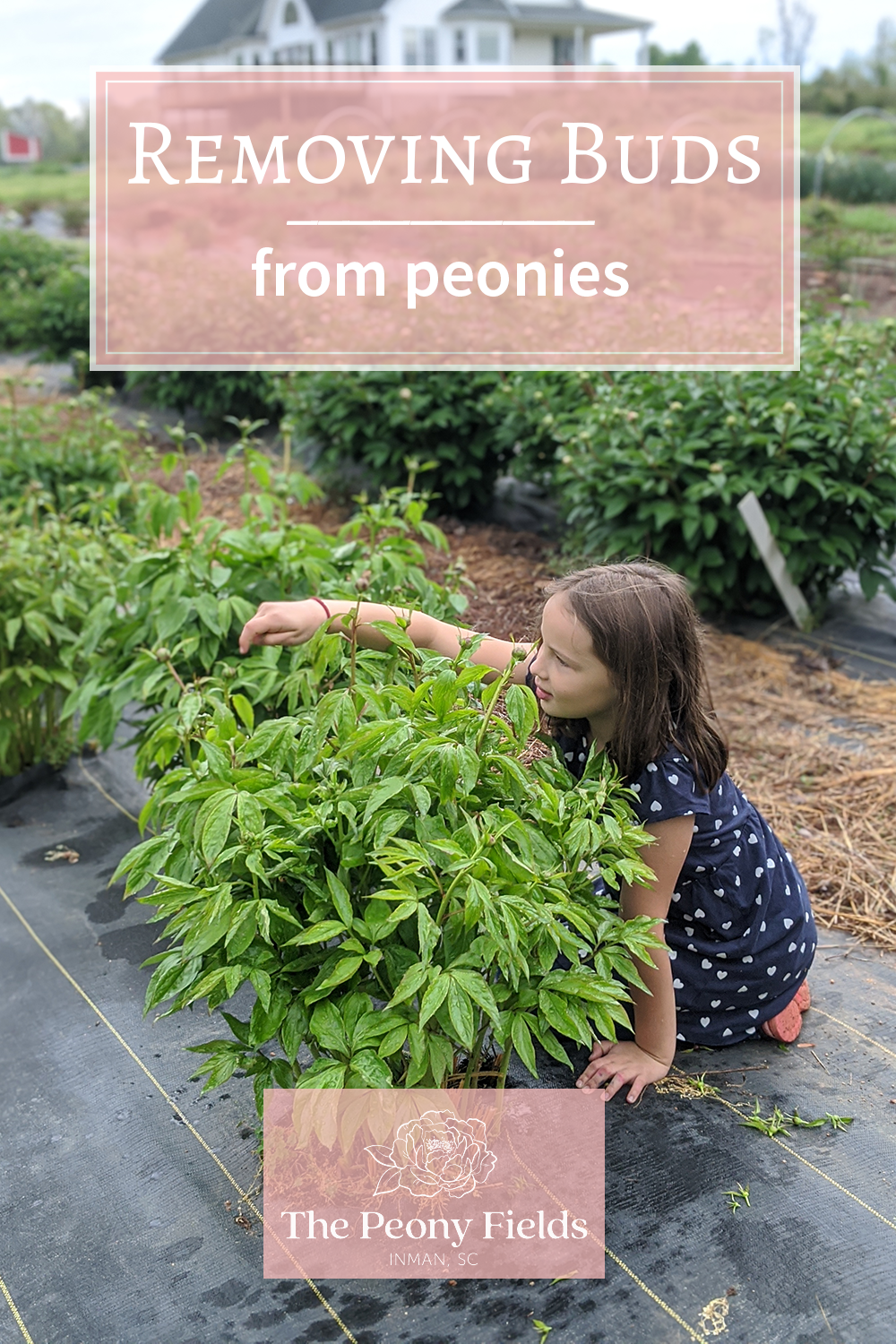Removing Flower Buds

If this is the first you're hearing about removing peony buds you may be flabbergasted. Don't buds make flowers? Don't we all want more flowers? Yes! Of course. But growing peonies is a years-long game and sometimes fewer buds now means more flowers later.
There are two reasons why you might remove buds from your peony plant:
It's very young
Those massive flowers that peonies produce take a lot of plant resources. A healthy, mature plant is quite capable of supporting all the buds it can produce. A strong root system, fed by last year's photosynthesis, combined with this year's vigorous spring growth, can foot the bill for those blooms. But a new plant, recently divided and fighting to establish its network of feeder roots, is less able to withstand the drain. Tradeoffs will have to be made to bloom in the first year. Better to remove the buds and let the plant work on its structure first.
That said, you are excited about your peony and curious about whether you have the variety the plant label says you do. This is a fair concern, as, in my experience, root distributors often mix up varieties. Quite often, a peony plant won't even bud up in the first year, or buds that do appear will wither. Sometimes, however, you're faced with a first-year plant that comes up with several buds. What should you do then?
My advice is to remove all buds except one. Then you can see the color of your flowers, although probably not the final shape. Many varieties that will have double blooms when they mature will come up single or semi-double the first year or two. To remove any extra buds, simply snap or clip the bud off. As soon as that single bloom begins to fade, or as soon as you can bear it, remove it too so that the peony can get back to work.
You might also remove buds from your plant because:
You want bigger blooms
Some varieties of peony grow one bud per stem naturally. This makes things easy for you. Some, however, grow one main bud and several side buds.

If you have a variety that does this, you have a choice to make. You can remove these side buds and force all the plant's energy into the one main bud, giving you one colossal bloom per stem. Or you can leave them and extend the bloom time. The side buds are likely to bloom later than the main bud, which can be snapped off when it fades to let them shine.
In my fields, the decision isn't so simple. It would seem straightforward to say that I want the biggest blooms possible for my cut flower customers, right? Well, sometimes the biggest bloom possible looks like this:

Great for shock effect, but difficult to work into a bouquet with other, life-sized flowers. Great for a flower show, perhaps. That's a blue-ribbon bloom.
So in my fields, side bud removal is variety-specific. Some varieties will produce small blooms without it. Some will just be too comically huge. On those varieties, I leave the side buds. They're a fun textural addition to bouquets, and some florists enjoy using them in boutonnieres and the like. They're unlikely to bloom, since the stem is cut at the right stage for the main bud.
You'll have to learn your plant's habit and decide what to do with the buds. What an adventure! Luckily, you've got many years to do it.

